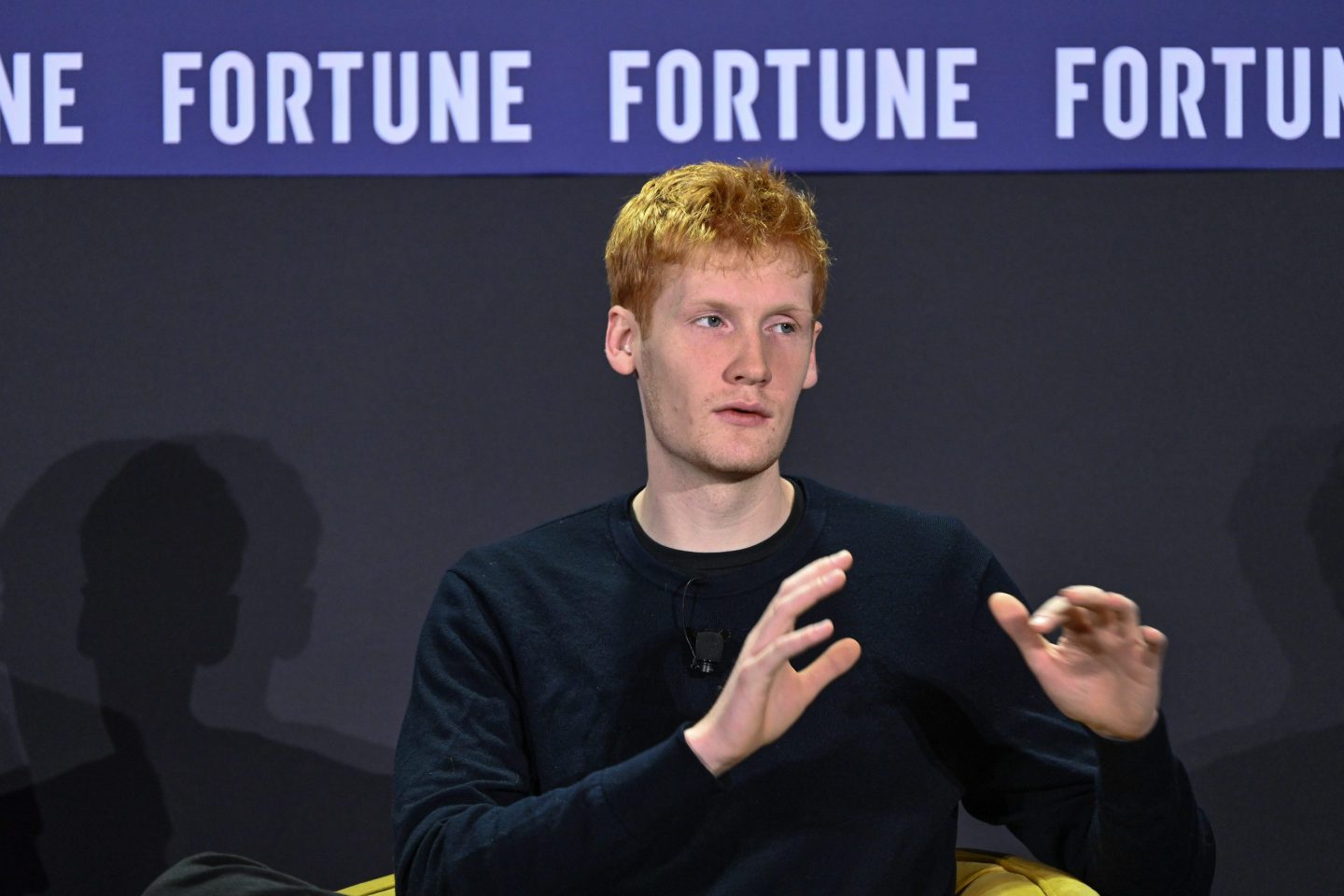Happy Friday, it’s tech reporter Alexandra Sternlicht.
Yesterday, I attended YouTube’s annual product hullabaloo Made on YouTube. The invite-only event reeled top creators like Alan Chikin Chow, and YouTube executives including CEO Neal Mohan and former CEO Susan Wojcicki to Google’s bougie Pier 57 event space. Aside from the DIY donut stations, DJ spinning Fred Again, and Hudson River views, the event was all about AI, and, to say the quiet part aloud: pushing YouTube further into TikTok territory.
“We’re committed to expanding creativity with AI technology in ways that are bold and responsible,” Mohan told the crowd. “We’re giving people around the world the ability to bring their dreams to life on-screen.”
YouTube’s AI products, which will be rolled out throughout this year and next, include Dream Screen: fully customizable green screen backdrops for YouTube Shorts, automatic language dubbing with Aloud to lip sync videos into non-native languages, AI insights, and AI-assisted music search. (For the latter, YouTube imported popstar Charlie Puth and Warner Music Group’s CEO to assuage fears that AI music will not be the death of creativity.)
That’s a whole lot of AI. Why? It’s very clear that YouTube is tapping the technology for entry-level creators to make compelling content. This chisels at a chief TikTok creator complaint: making TikToks is hard.
With YouTube going for easy-to-use green screens, music, and analytics as well as a new mobile video editing app called YouTube Create (fair to assume a direct response to TikTok’s CapCut), YouTube wants to be the place for young and experimental creators. This could increase the volume of content on YouTube Shorts, allowing the company to further tweak the algorithm, attract ad revenue—and maybe do so without having to compensate these new creators who would be ineligible for the company’s historically lucrative YouTube Partner Program.
On the flip side, TikTok is attempting uncharacteristic transparency, at least when it comes to AI. Earlier this week it rolled out tools that label AI-generated content and filters so that users don’t confuse things like fake Drake and the Bold Glamour filter with real content.
“As more creators take advantage of Artificial Intelligence (AI) to enhance their creativity, we want to support transparent and responsible content creation practices,” TikTok said in the product announcement.
So as YouTube tries to lure creators with AI while TikTok attempts to label it, the short-form video wars move to a new skirmish. And it might be the most important one of all.
Alexandra Sternlicht
Want to send thoughts or suggestions to Data Sheet? Drop a line here.
Today’s edition was curated by David Meyer.
NEWSWORTHY
Microsoft-Activision clearance. It looks like the last obstacle to Microsoft’s $69 billion Activision Blizzard takeover is about to be eliminated. As CNN reports, the U.K.’s Competition and Markets Authority—which had been worried about the deal’s impact on the nascent cloud-gaming market—has provisionally decided to finally clear the deal. Why? Activision promised to sell cloud streaming rights for its hit games to rival Ubisoft before the deal goes through, stopping Microsoft from limiting streaming of Call of Duty and World of Warcraft to its own platforms.
Google and TikTok. Younger people are increasingly using TikTok as a place to search for stuff, and now the company is testing out a search partnership with Google. TikTok told Insider that the feature was being trialed—alongside other third-party integrations—in several markets around the world. (In other Google news, the company insists its AI-chip-design partnership with Broadcom will continue, contrary to earlier reports. And in other TikTok news, that company apparently has an internal matchmaking service?!)
Stuff with AI in it. Microsoft is baking Copilot, its generative AI assistant, into Windows 11 and new Surface devices that it just announced. Reuters reports Copilot will hit Windows next Tuesday. Meanwhile, as described above, YouTube announced genAI backgrounds for Shorts, along with AI-powered video topic suggestions, background music recommendations, and dubbing. Earlier this week, Amazon previewed a genAI-ified Alexa assistant that should appear next year.
SIGNIFICANT FIGURES
€376 million ($400 million)
—The fine Intel will have to pay in Europe for paying PC manufacturers to halt or delay product launches featuring AMD processors. This is substantially less than the €1.06 billion ($1.2 billion) fine levied by the European Commission in 2009, which Intel successfully beat in court last year on appeal.
IN CASE YOU MISSED IT
Top tech analyst Dan Ives says Cisco splashing out $28 billion for the cybersecurity firm Splunk is a ‘well-designed strategic poker move’, by Will Daniel
Mergers and acquisitions are becoming more science than art as CEOs turn to AI for answers, by Andrea Guerzoni
DuckDuckGo CEO says Google kills competition through phone deals that make it hard for users to switch search engines: ‘It’s too many steps’, by the Associated Press
BEFORE YOU GO
Data center icon. Google fellow Luiz André Barroso has passed away at the age of 59. As Wired reports, the Brazilian was a key player in the development of cloud computing, due to his data center designs.
Nearly two decades ago, Google engineering chief Urs Hölzle asked Barroso to revamp the firm’s infrastructure. Barroso shunned the then-traditional approach of installing extremely expensive and powerful computers at the center of the facility, and instead opted to turn the data center into a highly customized giant computer, with software running in a distributed fashion. This led to enormous cost and energy savings.
Barroso was also instrumental in starting Google’s in-house AI-chip effort, and in introducing machine learning to Maps. The exact cause of death has not been disclosed though Wired described an internal Google memo ascribing it to "natural causes."
This is the web version of Data Sheet, a daily newsletter on the business of tech. Sign up to get it delivered free to your inbox.













